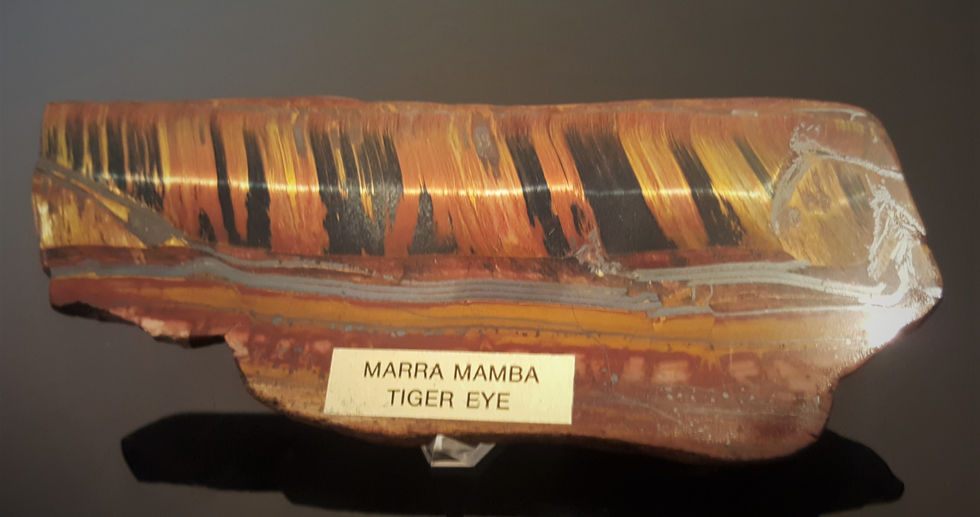top of page
155 mm Marra Mamba Tiger Eye from Pilbara , Western Australia
$ 149.99
ID20501
Location:
Hamersley Ranges, Pilbara region, Australia
Size: 155x59x8 mm (171,8 gr.)
Description
Marra Mamba Tiger Eye is a rare variety of Tiger Eye found only in the Hamersley Ranges of the Pilbara region in Western Australia. Only two deposits have ever produced “true” Mara Mamba, a rare type with reds, blues, yellows, gold, and greens.
It has an old label. It is possible to remove it, but because the label is old I choose to have it on. On the backside, there is a very thin layer of black felt glued to the backside. Small hits would easily break the piece, so the layer of felt is to prevent this.
The specimen has a beautiful color play, please watch the video to get a better view.
https://youtu.be/C8hU3Hm3V4g
About 25 years ago my father went to Australia where he bought some different minerals. I am not sure but I assume he bought this item back then.
Formation:
Mara Mamba is extremely old, forming when the Earth was very young and had little to no oxygen in its atmosphere. Oxygen-producing photosynthetic bacteria evolved more than 2700 million years ago and gave off oxygen as a waste product. This oxygen built up in the atmosphere and dissolved in the seawater. When iron, produced mainly from huge submarine volcanoes came in contact with this oxygen, it precipitated as iron oxide in the sea floor and resulted in iron-rich and silica-rich bands, which are now classified as banded iron formations (BIFs).
Burial and heating brought about crystallization of these layers and solutions carrying sodium penetrated through some layers, causing Riebeckite to form. Earth movements throughout the millions of years caused folding and faulting to occur, distortion the layers. Heated fluids passed through the rock and dissolved material and redeposited it elsewhere. The fibrous Riebeckite crystals were replaced by silica with fine dusts of yellow Goethite. These fibrous bands lead Tiger Eye to be classified as a chatoyant gemstone (classification for those minerals with a silky luster caused by fibrous bands).
About 2000 million years ago, the Pilbara and many other very old pieces of the continental crust were joined together in a supercontinent. When this supercontinent finally began to break up, waters heated by volcanic activity dissolved much silica from the banded iron formation, leaving huge iron ore deposits of almost pure hematite.
Colorations:
White: Quartz
Yellow: Goethite
Red: Hematite
Blue: Riebeckite
Green: A mixture of blue Riebeckite and yellow goethite
Black: Hematite and Magnetite
bottom of page




